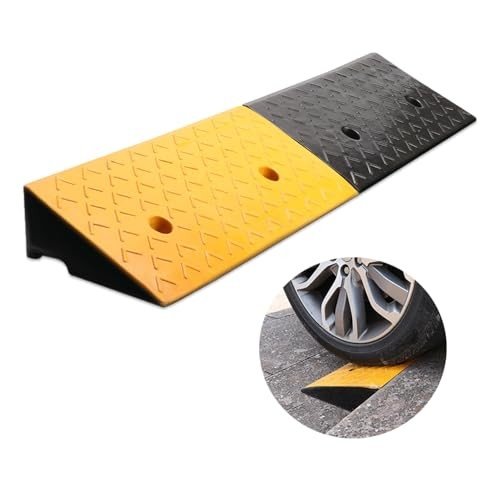
Wheel Chair Ramp
Add a review FollowOverview
-
Founded Date March 7, 1935
-
Posted Jobs 0
-
Viewed 2
Company Description
11 Ways To Fully Redesign Your Portable Ramps For Wheelchairs
Portable Ramps for Wheelchairs: Enhancing Mobility and Independence
Mobility plays an important role in the lives of people with specials needs, and among the most significant developments that foster self-reliance is the availability of portable ramps for wheelchairs. These ramps supply a versatile option for accessing to different environments, allowing users to browse efficiently across thresholds, stairs, and other barriers. In this post, we will explore the kinds of portable ramps, their features, and how to select the ideal one for your needs. Furthermore, we’ll respond to some regularly asked concerns to provide a thorough introduction of this crucial mobility aid.

Types of Portable Wheelchair Ramps
Portable wheelchair ramps been available in numerous styles, each designed for particular applications. Below is a table that details the main types:
| Ramp Type | Description | Best For |
|---|---|---|
| Folding Ramps | Compact and simple to transportation; can be stored in vehicles | Daily use and travel |
| Telescoping Ramps | Adjustable length; frequently used for various heights | Versatile for various locations |
| Roll-Up Ramps | Versatile, lightweight style; ideal for irregular surfaces | Travel and outdoor activities |
| Single Fold Ramps | Simple fold style; great for property use | Home entryways and porches |
| Multi-Fold Ramps | Multiple areas for substantial access; accommodates larger automobiles | Vans and trucks |
Comprehensive Insights on Ramp Types
-
Folding Ramps: Folding ramps are developed to fold in half or thirds, making them easy to carry. They’re frequently made from aluminum, providing a robust and lightweight option. They’re perfect for daily tasks, such as getting in a home or going to a buddy’s location.
-
Telescoping Ramps: These ramps have adjustable lengths, allowing users to personalize the height for various applications. They are helpful when frequent adjustments are required, making them ideal for a wide variety of environments from homes to public structures.
-
Roll-Up Ramps: As the name suggests, these ramps roll up into a compact shape, making them extremely portable. They are ideal for outside use or in environments with unpredictable terrain, such as parks or uneven pathways.
-
Single Fold Ramps: This style involves a single fold, permitting ease of set-up and stability. These ramps are terrific for home use– particularly for doorways or steps.
-
Multi-Fold Ramps: These ramps can handle heavy loads and are frequently utilized to access vehicles like vans and trucks. They can be unfolded to develop a long ramp for larger loads, making them extremely flexible.
Secret Features to Consider
When choosing a portable ramp, numerous features need to be taken into account to guarantee it meets your specific requirements:
1. Material
- Aluminum: Lightweight and resilient, popular for various types.
- Plastic: Offers flexibility and rust resistance, ideal for outside settings.
2. Weight Capacity
- Ramps come with different weight capacities. It’s important to choose a ramp that can securely support the weight of both the wheelchair and the user.
3. Length and Incline
- The length of the ramp is critical for functionality. The slope must not surpass 1:12 for manual wheelchairs and 1:4 for power chairs according to ADA suggestions.
4. Portability
- Consider how easy it is to carry the ramp. Functions such as weight, folding capability, and whether it includes a carrying case are very important.
5. Grip and Surface
- Non-slip surface area materials are crucial for safety. Look for ramps with textured surfaces or side rails for added security.
6. Storage Solutions
- Some ramps feature additional functions, such as bring deals with, and easy storage solutions that enhance area when not in use.
Benefits of Using Portable Wheelchair Ramps
Using portable wheelchair ramps extends beyond mere accessibility– these essential tools offer a series of benefits:
-
Independence: Users can navigate areas without assistance, improving their autonomy.
-
Versatility: They can be used in a range of settings, from homes and offices to outside environments.
-
Convenience: Ramps can be utilized at brief notice, making impromptu trips basic and possible.
-
Security: Reduces the threat of falls or accidents when transitioning in between various height levels.
Regularly Asked Questions (FAQs)
1. How do I select the right ramp?
When choosing a ramp, think about the height you need to get rid of, the kind of wheelchair you use, and your environment (portable vs. irreversible setup). Constantly check the weight capability and security features.
2. Can portable ramps be used outdoors?
Yes, most portable ramps are designed to endure outside conditions, but ensure they have non-slip surfaces and resilient materials.
3. How steep can a Portable Ramp Wheelchair ramp be?
According to ADA standards, the ideal ratio is a slope of 1:12 for wheelchairs, suggesting for each inch of height, there should be at least 12 inches of ramp length.
4. Are there ramps suitable for various surfaces?
Yes, roll-up and telescoping ramps are particularly reliable for irregular surface areas and terrains, making them flexible for outside use.
5. Will insurance cover the expense of a portable ramp?
Protection for portable ramps can differ based on private insurance plans and scenarios. It is a good idea to talk to the insurance coverage service provider for specifics.
In summary, portable wheelchair Disabled Ramps are important tools that considerably boost Mobility Ramps and independence for wheelchair users. By understanding the different types of ramps, crucial functions to consider, and the advantages they use, individuals can make informed choices that suit their requirements. Whether for everyday errands or outdoor experiences, a portable ramp can significantly enhance availability and enable people to traverse their environment with confidence.

